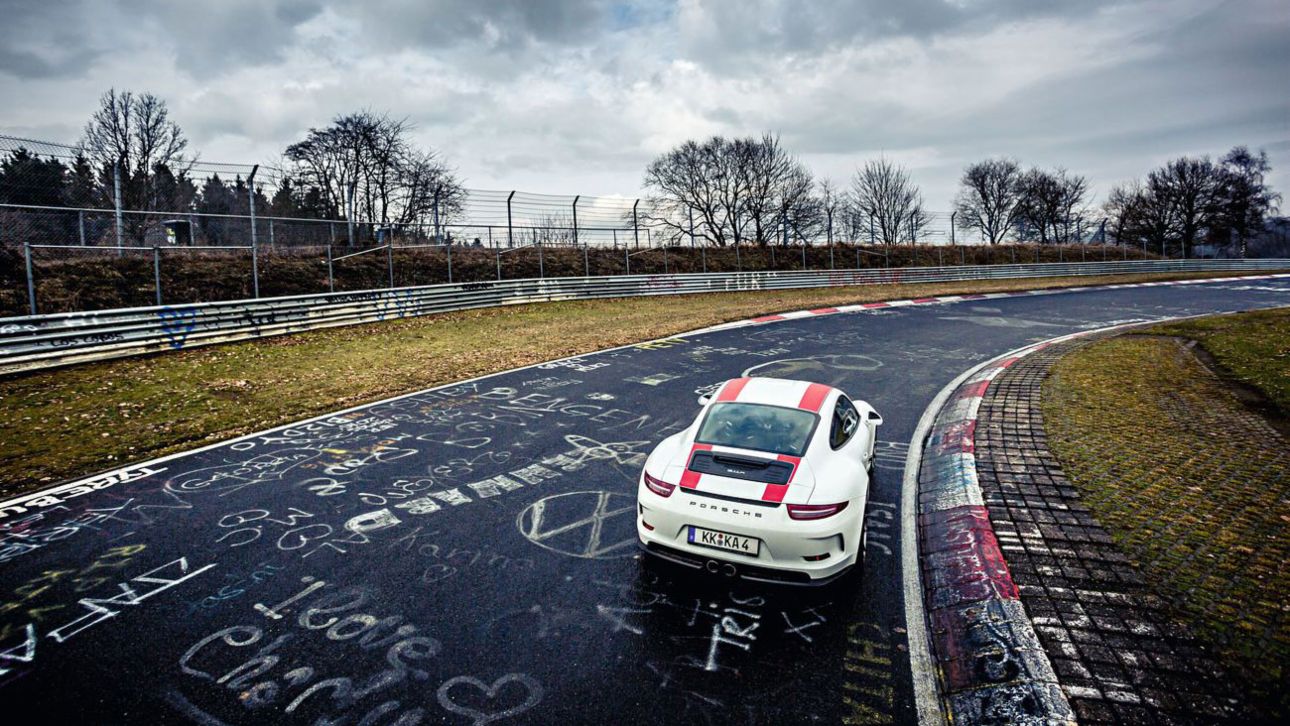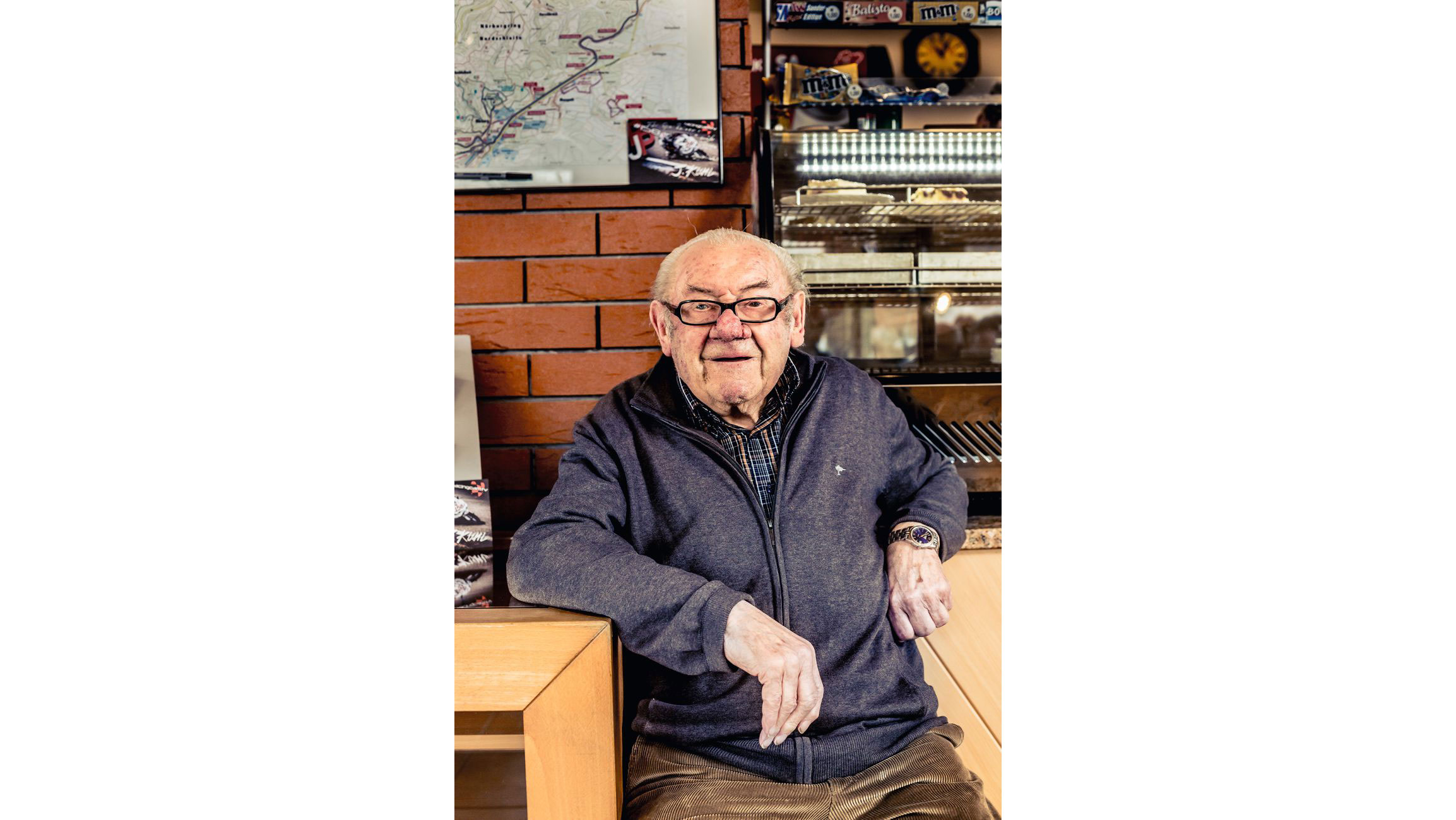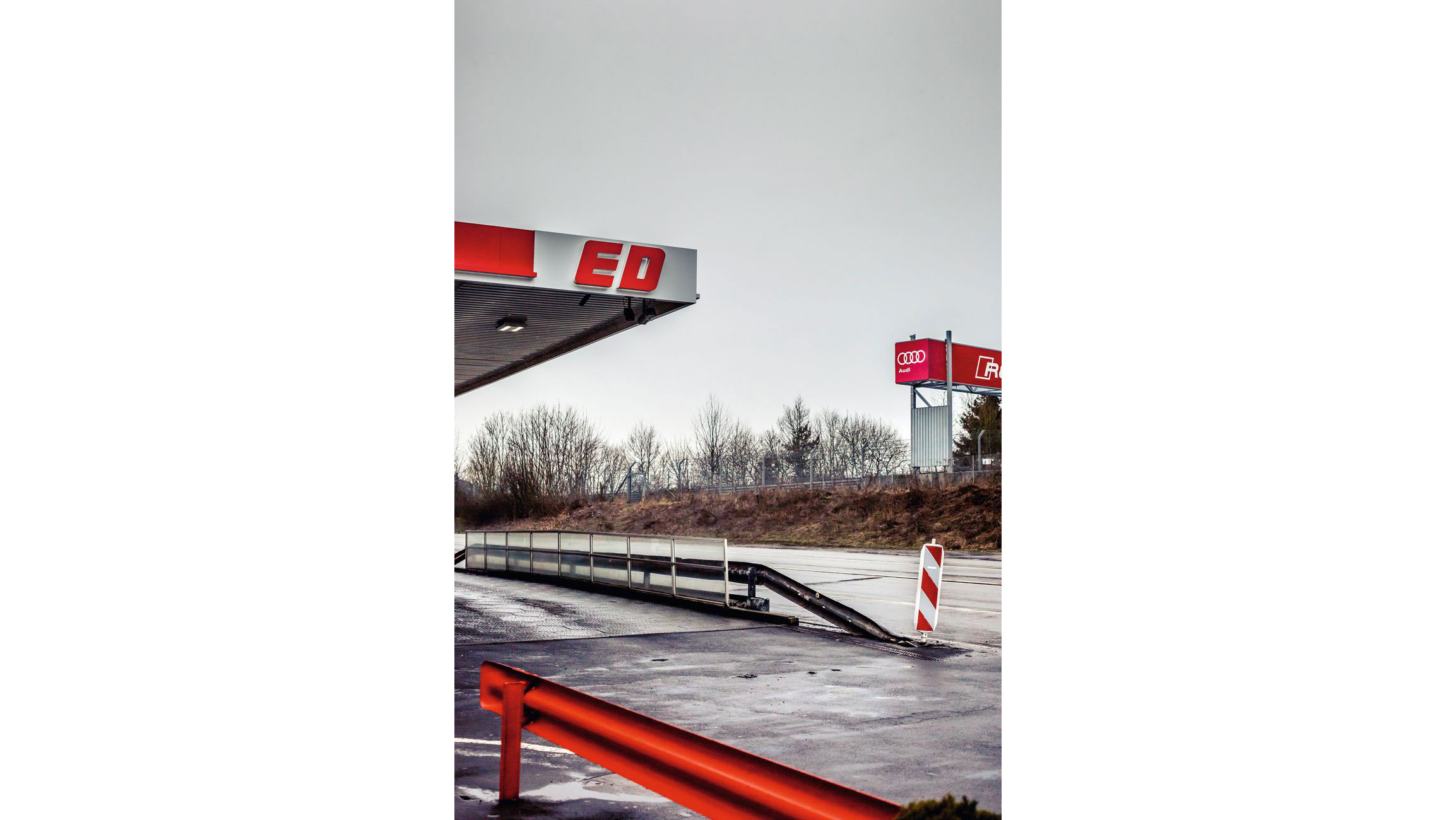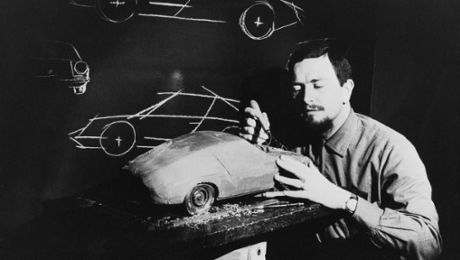The Nürburgring has always shaped the people around it – and in turn, they shape the Nürburgring. No other race track in the world commands so much respect.
Anyone reaching the grand old age of 90 should actually start taking things a bit easier. Less rush, less stress. Better to just stop and look to the past. The climate has changed, and so has fashion. And not to mention the technology. But one thing has endured – the Nürburgring, where the opening race took place on June 18, 1927. It’s a bit shorter now, but it still has the same 73 turns, gradients and inclines. There’s a 300-metre difference in altitude between the lowest point at Breitscheid and the highest point on the Hohe Acht section. The Nordschleife (“North Loop”) of the Nürburgring is a 20.8-kilometre long ribbon of asphalt that runs between valleys and mountains up to 800 metres high. Where dense undergrowth once lined the racetrack, there are now high quadruple crash barriers and massive FIA safety fences.
And yet: just as the Eifel course – which was once referred to by the federal state of Rheinland-Pfalz as a “single-track country road with no oncoming traffic or speed limits” – has remained true to its heritage, the people who grew up there and helped to shape it still hang on to it.
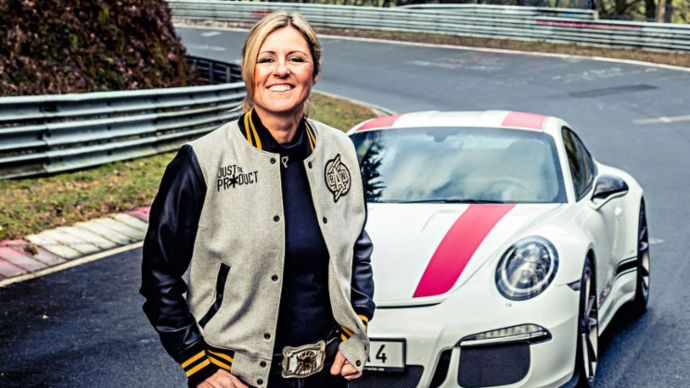
“Peeling potatoes was never really my thing”
Sabine Schmitz, 47, racing driver, horse lover and former presenter of British car show “Top Gear”, has already completed many thousands of laps on the Nordschleife. She did her first lap there on her bike, then – in secret! – in her mother’s car, and followed that up with her own Polo GT. “My dad paid for the tyres. I’ve done about 30,000 laps so far, I reckon.” Or, to put it another way, more than 600,000 kilometres, by a rough estimate. Schmitz isn’t just a “ring taxi” driver, she’s also taken part in dozens of races at the Nürburgring. Her achievements include three overall victories in the legendary 24-hour race and six in the endurance championship.
All in Porsche, as part of the Frikadelli Racing Team run by her partner, Klaus Abbelen. The couple live on a horse ranch in Barweiler, not far from the Nürburgring. In season, they play host to leisure racers from the US and Canada. Schmitz, a trained hotel manager, was actually supposed to take over her parents’ inn, the Hotel am Tiergarten, which is within earshot of the section of track that bears the same name, at the end of Döttinger Höhe. “My grandmother was really annoyed because I loved racing – she thought it was more a man’s thing. But peeling potatoes wasn’t my thing.”
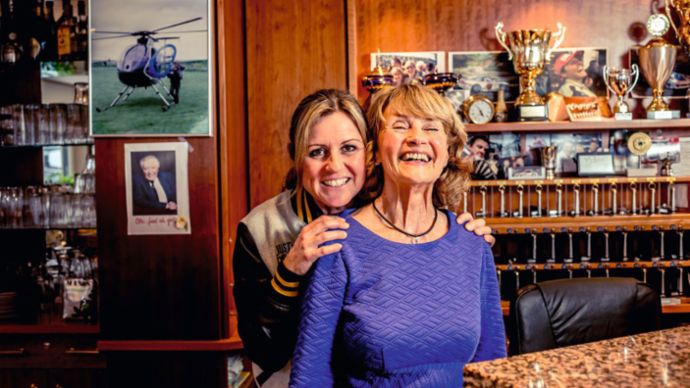
Her mother, Uschi Schmitz, 75, knows why her daughter feels so connected to the Nürburgring. “Even when I was a little girl, I knew all I wanted to do was work here at the Nürburgring.” All the big names in racing had already stayed at their Tiergarten hotel – and it wasn’t unusual for them to break the lights with champagne corks when they were celebrating wins. People used to say some racers spent the evenings before races making just as much of the local hospitality as their team bosses – and she says that’s no rumour. But that would be unthinkable today. “Young drivers are all very sensible nowadays.”
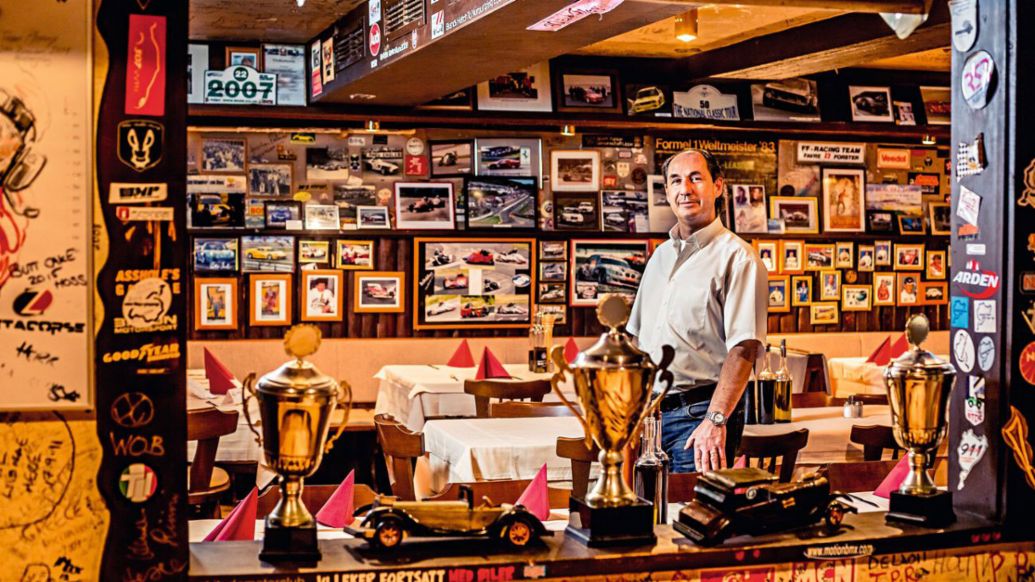
One floor below, in the basement of the hotel, is the famous Pistenklause restaurant. The boss there is Patrizio Persiani, 54, who owns several Italian restaurants in the area. “I drive a Porsche Cayenne, but I don’t have a clue where I’m going when it comes to the Nürburgring.” He’s been keeping visitors to the Nürburgring happy with selected Italian wines and pasta for more than 20 years. In all this time, he’s only ever been on track six times – and on one of those occasions he was in the passenger seat next to Sabine Schmitz. “I’ll never forget that lap – talk about brown trousers!”
His fillet steaks cooked over hot coals enjoy cult status, especially among English-speaking visitors, as do the celebrities who are simply loopy about the Nordschleife, such as American actor and Porsche racing driver Patrick Dempsey or Russian oligarch Roman Abramovich, who regularly turn up to visit his guest rooms. For them, this place provides an entertaining and welcome distraction from all the action on track. Hundreds of photos, old race posters, autographs and glowing reviews of former race idols adorn the walls of the Pistenklause.
“Drive carefully, lads!”
At 89, he’s almost as old as the Nürburgring itself: Reiner Strack, nicknamed Grandpa Strack. He took over as track keeper from his father, who was born in 1896. “He helped build the Nordschleife, and later spent his entire working life at the Nürburgring,” Strack explains in his typical Eifel dialect. Even now, almost every day he drives the 200 metres from his home to the Café zur Nordschleife to check on ticket sales and see what food and drink his son and successor Alexander is offering. “I have to see what’s going on!” Shortly after the war, he himself took up a position with the “only big employer in the area”, and in 1958 he took over the position that he held until his retirement in 1995, familiar to thousands of Nürburgring visitors – the rather grumpy-looking ticket seller and gatekeeper at the entrance to the Nordschleife in Breitscheid. “I often used to warn young people, like current racing driver Christian Menzel and Porsche test driver Timo Kluck – drive carefully, lads, I said, it’s slippery in parts,” says Strack. “They never believed me, of course. Then they’d end up behind the barrier with their wheels spinning, and then it was back to the start again. But they could drive.”
The Nürburgring locals adopt a leisurely approach – as long as they’re not on track, anyway. “Nicht so viel Driss” means, more or less, keep cool, don’t show off.
Today’s Nürburgring tourists can no longer be compared with the visitors of the past, according to Strack. “The machines they turn up in nowadays are completely different. A lot of people used to bring VW Beetles here, some of them lowered and hellishly loud. Some people turned up in motorhomes, and others brought everything but the kitchen sink with them. The beautiful strips of green to the left and right of the track have always suffered. People used to prang the crash barriers as well, and then secretly disappear without paying for the damage. But the days of buses and caravans are over. Nobody would dare go on that track in one of those now.” People nowadays are more likely to put blankets on their tyres, not over their knees.
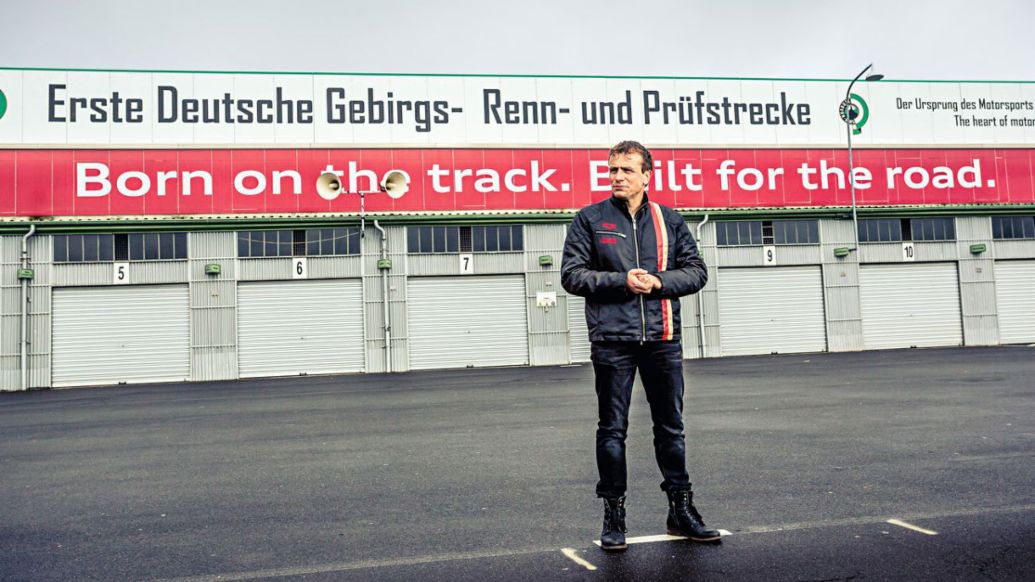
“The Porsche don’t break”
Ron Simon also works with bringing tyres up to temperature. His business is situated below the Nürburg. “I have 13 different Porsche models at the start. They simply don’t break – not on the Nordschleife, and not on the Eifel tours that we organise.” Simon’s company RSR hires out cars for tourist trips, trackdays and VLN and RCN series races. You can also book his services as a coach, or for taxi rides on the Nordschleife. “I’m something of a last resort, you could say. If you can’t afford a Porsche but still want to drive a Cayman S or a GT3 RS around the Nürburgring, I’m the man you need.
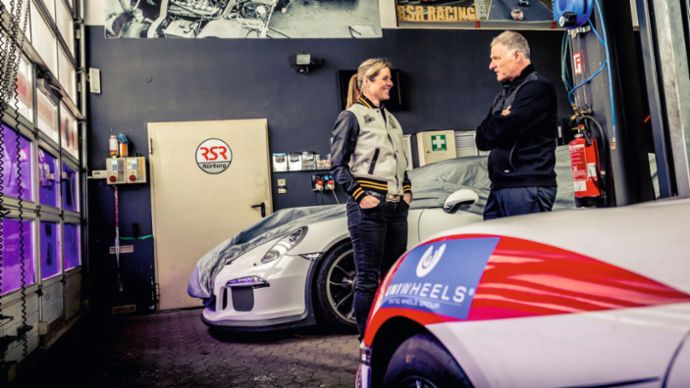
Sometimes you get people turning up who’ve remodelled their own cars on the crash barriers but wouldn’t even dream of breaking off their Nordschleife holiday just because of that.” The fact that the track exacts its price is a truism, even though people don’t like to talk about it anywhere near the Nordschleife.
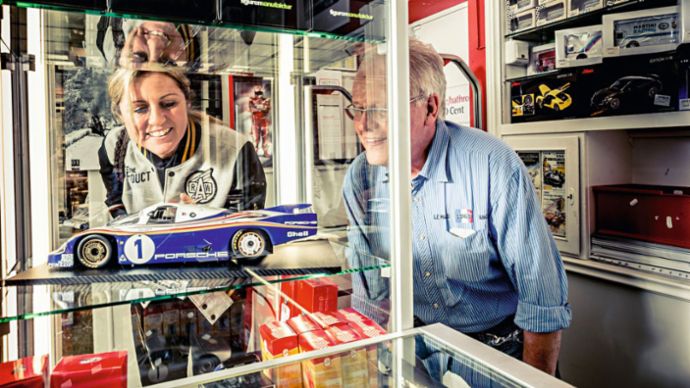
Joachim Retterath, 68, owner of a petrol station at Döttinger Höhe, knows the facial expressions of stricken Nürburgring battlers and their relatives all too well. “A lot of people ended up suffering in the early 1960s and 1970s. Neither the track nor the cars were particularly safe. But thank God, things are completely different nowadays. I sometimes see people’s sad and disappointed faces, and I just know: they won’t be driving home in their own cars.” The only petrol station in the immediate vicinity is more than just a place where you can refuel, top up your oil and check your tyre pressures.
It’s a meeting place for motorsport fans, and a place where people can buy food, drink and books. There’s also a hotel, and the petrol station is already in its third generation. “Hm, probably about 100,000,” speculates Retterath when asked about the number of toy cars stacked in towers in his shop. “When grown men choose their dream car in a 1:18 or 1:43 scale, their eyes shining, I can feel the joy welling up in my heart.”
Just a few kilometres away is the Cockpit Bar of the Dorint Hotel on the start and finish straight. This is where Christophorus meets Josef Moré, 72. He was the managing director here for almost 30 years. Many regular customers referred to his bar as “Josefs”. He decorated it with countless items of racing memorabilia, posters, engine parts, autographs and trophies. This has always been one of the favourite places at the Nürburgring, a place where things that have happened on track are accepted and shared, honestly and bravely.
If Moré, for whatever reason – a victory, a podium finish or perhaps an unfortunate failure – passed a white glove across the counter, his guests knew what the situation was. Time for a glass of ice-cold “Eifelgeist”. There wasn’t a dry eye in the house when Moré poured this clear herb schnapps.
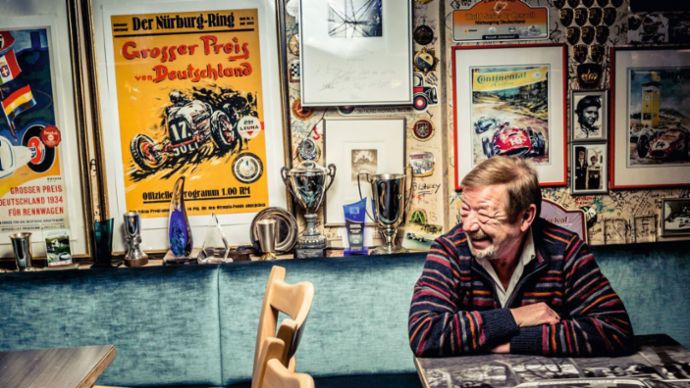
Porsche at the Nürburgring
Porsche was one of the first manufacturers to make the Nürburgring’s Nordschleife an integral part of its own test programme. Today, no fewer than 37 companies – almost all car and tyre manufacturers – form the “industrial pool” at the Nürburgring, which was founded more than 20 years ago. From mid-March to mid-October, the track is reserved from 8 am to 5.15 pm, 56 days a year, for trial runs by the companies represented in the industrial pool. All drivers are specially trained for driving on track. Nowhere else in the world can you probe the workings of a car so effectively. The load profile of the 20.8-kilometre track reflects virtually every conceivable driving condition. The “acceleration factor” – as it’s known – that’s assumed for the Nürburgring is given as 1 to 100. In other words, one kilometre of Nordschleife corresponds to about 100 kilometres on normal roads. This allows the entire life of a car to be simulated in a comparatively short time. This unique track, with its many depressions and crests, is ideal for endurance tests and functional tests. Any car that’s found to go well on the Nordschleife is fine for use all over the world.
Additional information: www.nuerburgring.de
Info
Text first published in the magazine „Porsche Klassik 15“.
Author: Horst von Saurma
Photos: Theodor Barth
Copyright: The image and sound published here is copyright by Dr. Ing. h.c. F. Porsche AG, Germany or other individuals. It is not to be reproduced wholly or in part without prior written permission of Dr. Ing. h.c. F. Porsche AG. Please contact newsroom@porsche.com for further information.
